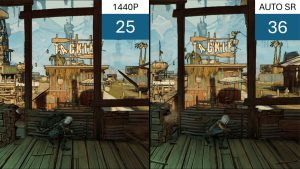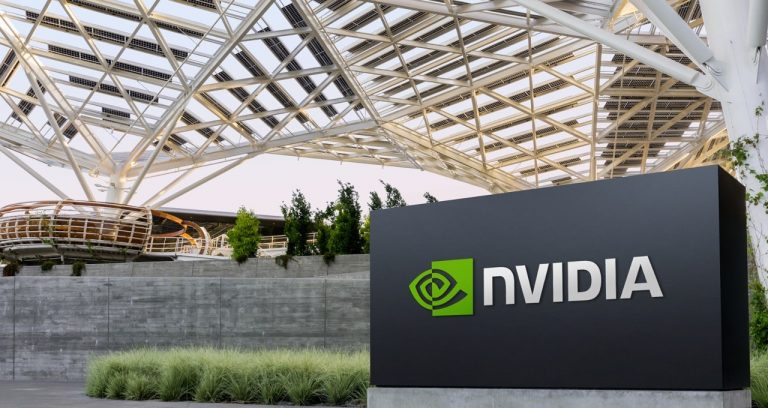Across industries, AI is supercharging innovation with machine-powered computation. In finance, bankers are using AI to detect fraud more quickly and keep accounts safe, telecommunications providers are improving networks to deliver superior service, scientists are developing novel treatments for rare diseases, utility companies are building cleaner, more reliable energy grids and automotive companies are making self-driving cars safer and more accessible.
The backbone of top AI use cases is data. Effective and precise AI models require training on extensive datasets. Enterprises seeking to harness the power of AI must establish a data pipeline that involves extracting data from diverse sources, transforming it into a consistent format and storing it efficiently.
Data scientists work to refine datasets through multiple experiments to fine-tune AI models for optimal performance in real-world applications. These applications, from voice assistants to personalized recommendation systems, require rapid processing of large data volumes to deliver real-time performance.
As AI models become more complex and begin to handle diverse data types such as text, audio, images, and video, the need for rapid data processing becomes more critical. Organizations that continue to rely on legacy CPU-based computing are struggling with hampered innovation and performance due to data bottlenecks, escalating data center costs, and insufficient computing capabilities.
Many businesses are turning to accelerated computing to integrate AI into their operations. This method leverages GPUs, specialized hardware, software, and parallel computing techniques to boost computing performance by as much as 150x and increase energy efficiency by up to 42x.
Leading companies across different sectors are using accelerated data processing to spearhead groundbreaking AI initiatives.
Finance Organizations Detect Fraud in a Fraction of a Second
Financial organizations face a significant challenge in detecting patterns of fraud due to the vast amount of transactional data that requires rapid analysis. Additionally, the scarcity of labeled data for actual instances of fraud poses a difficulty in training AI models. Conventional data science pipelines lack the required acceleration to handle the large data volumes associated with fraud detection. This leads to slower processing times that hinder real-time data analysis and fraud detection capabilities.
To overcome these challenges, American Express, which handles more than 8 billion transactions per year, uses accelerated computing to train and deploy long short-term memory (LSTM) models. These models excel in sequential analysis and detection of anomalies, and can adapt and learn from new data, making them ideal for combating fraud.
Leveraging parallel computing techniques on GPUs, American Express significantly speeds up the training of its LSTM models. GPUs also enable live models to process huge volumes of transactional data to make high-performance computations to detect fraud in real time.
The system operates within two milliseconds of latency to better protect customers and merchants, delivering a 50x improvement over a CPU-based configuration. By combining the accelerated LSTM deep neural network with its existing methods, American Express has improved fraud detection accuracy by up to 6% in specific segments.
Financial companies can also use accelerated computing to reduce data processing costs. Running data-heavy Spark3 workloads on NVIDIA GPUs, PayPal confirmed the potential to reduce cloud costs by up to 70% for big data processing and AI applications.
By processing data more efficiently, financial institutions can detect fraud in real time, enabling faster decision-making without disrupting transaction flow and minimizing the risk of financial loss.
Telcos Simplify Complex Routing Operations
Telecommunications providers generate immense amounts of data from various sources, including network devices, customer interactions, billing systems, and network performance and maintenance.
Managing national networks that handle hundreds of petabytes of data every day requires complex technician routing to ensure service delivery. To optimize technician dispatch, advanced routing engines perform trillions of computations, taking into account factors like weather, technician skills, customer requests and fleet distribution. Success in these operations depends on meticulous data preparation and sufficient computing power.
AT&T, which operates one of the nation’s largest field dispatch teams to service its customers, is enhancing data-heavy routing operations with NVIDIA cuOpt, which relies on heuristics, metaheuristics and optimizations to calculate complex vehicle routing problems.
In early trials, cuOpt delivered routing solutions in 10 seconds, achieving a 90% reduction in cloud costs and enabling technicians to complete more service calls daily. NVIDIA RAPIDS, a suite of software libraries that enables acceleration of data science and analytics pipelines, further accelerates cuOpt, allowing companies to integrate local search heuristics and metaheuristics like Tabu search for continuous route optimization.
AT&T is adopting NVIDIA RAPIDS Accelerator for Apache Spark to enhance the performance of Spark-based AI and data pipelines. This has helped the company boost operational efficiency on everything from training AI models to maintaining network quality to reducing customer churn and improving fraud detection. With RAPIDS Accelerator, AT&T is reducing its cloud computing spend for target workloads while enabling faster performance and reducing its carbon footprint.
Accelerated data pipelines and processing will be critical as telcos seek to improve operational efficiency while delivering the highest possible service quality.
Biomedical Researchers Condense Drug Discovery Timelines
As researchers utilize technology to study the roughly 25,000 genes in the human genome to understand their relationship with diseases, there has been an explosion of medical data and peer-reviewed research papers. Biomedical researchers rely on these papers to narrow down the field of study for novel treatments. However, conducting literature reviews of such a massive and expanding body of relevant research has become an impossible task.
AstraZeneca, a leading pharmaceutical company, developed a Biological Insights Knowledge Graph (BIKG) to aid scientists across the drug discovery process, from literature reviews to screen hit rating, target identification and more. This graph integrates public and internal databases with information from scientific literature, modeling between 10 million and 1 billion complex biological relationships.
BIKG has been effectively used for gene ranking, aiding scientists in hypothesizing high-potential targets for novel disease treatments. At NVIDIA GTC, the AstraZeneca team presented a project that successfully identified genes linked to resistance in lung cancer treatments.
To narrow down potential genes, data scientists and biological researchers collaborated to define the criteria and gene features ideal for targeting in treatment development. They trained a machine learning algorithm to search the BIKG databases for genes with the designated features mentioned in literature as treatable. Utilizing NVIDIA RAPIDS for faster computations, the team reduced the initial gene pool from 3,000 to just 40 target genes, a task that previously took months but now takes mere seconds.
By supplementing drug development with accelerated computing and AI, pharmaceutical companies and researchers can finally use the enormous troves of data building up in the medical field to develop novel drugs faster and more safely, ultimately having a life-saving impact.
Utility Companies Build the Future of Clean Energy
There’s been a significant push to shift to carbon-neutral energy sources in the energy sector. With the cost of harnessing renewable resources such as solar energy falling drastically over the last 10 years, the opportunity to make real progress toward a clean energy future has never been greater.
However, this shift toward integrating clean energy from wind farms, solar farms and home batteries has introduced new complexities in grid management. As energy infrastructure diversifies and two-way power flows must be accommodated, managing the grid has become more data-intensive. New smart grids are now required to handle high-voltage areas for vehicle charging. They must also manage the availability of distributed stored energy sources and adapt to variations in usage across the network.
Utilidata, a prominent grid-edge software company, has collaborated with NVIDIA to develop a distributed AI platform, Karman, for the grid edge using a custom NVIDIA Jetson Orin edge AI module. This custom chip and platform, embedded in electricity meters, transforms each meter into a data collection and control point, capable of handling thousands of data points per second.
Karman processes real-time, high-resolution data from meters at the network’s edge. This enables utility companies to gain detailed insights into grid conditions, predict usage and seamlessly integrate distributed energy resources in seconds, rather than minutes or hours. Additionally, with inference models on edge devices, network operators can anticipate and quickly identify line faults to predict potential outages and conduct preventative maintenance to increase grid reliability.
Through the integration of AI and accelerated data analytics, Karman helps utility providers transform existing infrastructure into efficient smart grids. This allows for tailored, localized electricity distribution to meet fluctuating demand patterns without extensive physical infrastructure upgrades, facilitating a more cost-effective modernization of the grid.
Automakers Enable Safer, More Accessible, Self-Driving Vehicles
As auto companies strive for full self-driving capabilities, vehicles must be able to detect objects and navigate in real time. This requires high-speed data processing tasks, including feeding live data from cameras, lidar, radar and GPS into AI models that make navigation decisions to keep roads safe.
The autonomous driving inference workflow is complex and includes multiple AI models along with necessary preprocessing and postprocessing steps. Traditionally, these steps were handled on the client side using CPUs. However, this can lead to significant bottlenecks in processing speeds, which is an unacceptable drawback for an application where fast processing equates to safety.
To enhance the efficiency of autonomous driving workflows, electric vehicle manufacturer NIO integrated NVIDIA Triton Inference Server into its inference pipeline. NVIDIA Triton is open-source, multi-framework, inference-serving software. By centralizing data processing tasks, NIO reduced latency by 6x in some core areas and increased overall data throughput by up to 5x.
NIO’s GPU-centric approach made it easier to update and deploy new AI models without the need to change anything on the vehicles themselves. Additionally, the company could use multiple AI models at the same time on the same set of images without having to send data back and forth over a network, which saved on data transfer costs and improved performance.
By using accelerated data processing, autonomous vehicle software developers ensure they can reach a high-performance standard to avoid traffic accidents, lower transportation costs and improve mobility for users.
Retailers Improve Demand Forecasting
In the fast-paced retail environment, the ability to process and analyze data quickly is critical to adjusting inventory levels, personalizing customer interactions and optimizing pricing strategies on the fly. The larger a retailer is and the more products it carries, the more complex and compute-intensive its data operations will be.
Walmart, the largest retailer in the world, turned to accelerated computing to significantly improve forecasting accuracy for 500 million item-by-store combinations across 4,500 stores.
As Walmart’s data science team built more robust machine learning algorithms to take on this mammoth forecasting challenge, the existing computing environment began to falter, with jobs failing to complete or generating inaccurate results. The company found that data scientists were having to remove features from algorithms just so they would run to completion.
To improve its forecasting operations, Walmart started using NVIDIA GPUs and RAPIDs. The company now uses a forecasting model with 350 data features to predict sales across all product categories. These features encompass sales data, promotional events, and external factors like weather conditions and major events like the Super Bowl, which influence demand.
Advanced models helped Walmart improve forecast accuracy from 94% to 97% while eliminating an estimated $100 million in fresh produce waste and reducing stockout and markdown scenarios. GPUs also ran models 100x faster with jobs complete in just four hours, an operation that would’ve taken several weeks in a CPU environment.
By shifting data-intensive operations to GPUs and accelerated computing, retailers can lower both their cost and their carbon footprint while delivering best-fit choices and lower prices to shoppers.
Public Sector Improves Disaster Preparedness
Drones and satellites capture huge amounts of aerial image data that public and private organizations use to predict weather patterns, track animal migrations and observe environmental changes. This data is invaluable for research and planning, enabling more informed decision-making in fields like agriculture, disaster management and efforts to combat climate change. However, the value of this imagery can be limited if it lacks specific location metadata.
A federal agency working with NVIDIA needed a way to automatically pinpoint the location of images missing geospatial metadata, which is essential for missions such as search and rescue, responding to natural disasters and monitoring the environment. However, identifying a small area within a larger region using an aerial image without metadata is extremely challenging, akin to locating a needle in a haystack. Algorithms designed to help with geolocation must address variations in image lighting and differences due to images being taken at various times, dates and angles.
To identify non-geotagged aerial images, NVIDIA, Booz Allen and the government agency collaborated on a solution that uses computer vision algorithms to extract information from image pixel data to scale the image similarity search problem.
When attempting to solve this problem, an NVIDIA solutions architect first used a Python-based application. Initially running on CPUs, processing took more than 24 hours. GPUs supercharged this to just minutes, performing thousands of data operations in parallel versus only a handful of operations on a CPU. By shifting the application code to CuPy, an open-sourced GPU-accelerated library, the application experienced a remarkable 1.8-million-x speedup, returning results in 67 microseconds.
With a solution that can process images and the data of large land masses in just minutes, organizations can gain access to the critical information needed to respond more quickly and effectively to emergencies and plan proactively, potentially saving lives and safeguarding the environment.
Accelerate AI Initiatives and Deliver Business Results
Companies using accelerated computing for data processing are advancing AI initiatives and positioning themselves to innovate and perform at higher levels than their peers.
Accelerated computing handles larger datasets more efficiently, enables faster model training and selection of optimal algorithms, and facilitates more precise results for live AI solutions.
Enterprises that use it can achieve superior price-performance ratios compared to traditional CPU-based systems and enhance their ability to deliver outstanding results and experiences to customers, employees and partners.
Learn how accelerated computing helps organizations achieve AI objectives and drive innovation.












